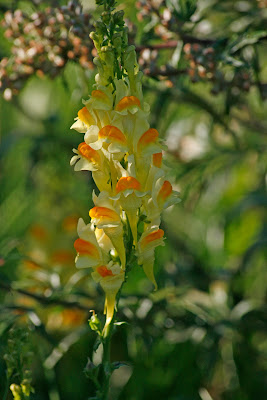
Bird One
 Bird One May 31st 2011: P10,P9 old, P8 growing, P7-1 new
Bird One May 31st 2011: P10,P9 old, P8 growing, P7-1 new. (photos Richard Bonser). Presuming this bird is a 2nd calender year than the moult and plumage seems to be okay for a 1st summer Great Skua.

Bird Two
 Bird Two May 31st 2011: No moult or advanced moult? (P10 displaced or P10 old?)
Bird Two May 31st 2011: No moult or advanced moult? (P10 displaced or P10 old?) (photos Richard Bonser). Well with this one- if this is a fresh bird than that could be interesting (could suggest a Southern Skua) but if that is a old primary and the bird is in moult than again a Great Skua seems to be a good fit.

Bird Three: Photo (Tony Blunden)
 Bird Three June 2nd 2011: p10-p8 old, p7 growing, p1-6 replaced. Outer secondaries growing.
Bird Three June 2nd 2011: p10-p8 old, p7 growing, p1-6 replaced. Outer secondaries growing. This bird is rather interesting as it shows a lot of adult type patterning on the upperparts and upperwing coverts. An adult in moult this time of year would suggest a Southern Skua and with this kind of mottling more likely a Brown. However what about a non-breeding adult or perhaps an advanced 2nd calender year or a 3rd calender year Great Skua?

Bird Three?
 Bird Three again? Seen on May 31st c20 miles from original location. p10-p8 old, p7 growing, p1-6 replaced. Outer secondaries growing.
Bird Three again? Seen on May 31st c20 miles from original location. p10-p8 old, p7 growing, p1-6 replaced. Outer secondaries growing. (Photos Richard Bonser) This looks like the same bird.
In short, I don't really know what these are but if they are all moulting 2nd/3rd calender year birds than Great Skua would be a good fit. However if bird 2 is not moulting or if bird 3 is an adult than they could be Southern Skuas (Browns would be a closer plumage fit) .
'FUNFACTS' about large Skuas:
MOULT:
Juv Southern Skuas- July to January
Juv Great Skuas- March to August
Adult Southern Skuas- April to September
Adult Great Skuas- August to April
PLUMAGE FEATURES:
Juv Southern Skuas- Uniform (more so in South Polar). Often white tarsi. Pale feathering at base of bill.
Juv Great Skuas- Dark hood, rufous tones in body
Adult Southern Skuas- South Polars occur in pale, intermediate and dark phases but overall cold toned with pale at base of bill. Browns are less mottled than Greats and generally darker brown. Both have a more uniform upperwing.
Adult Great Skuas- Heavily mottled, dark capped, two toned upper wing (contrast between coverts and primaries), yellow brown tones.
STRUCTURAL FEATURES:
South Polars are generally smaller with less heavy bills than other two
Browns have a short primary projection?
Here's Richard's take on it:
http://rothandb.blogspot.com/

























































